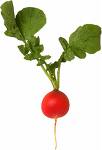 We have had very good luck with spinach. In fact last year we couldn’t give it away fast enough – and just from one packet of seeds.
We have had very good luck with spinach. In fact last year we couldn’t give it away fast enough – and just from one packet of seeds.
The seeds are sown when the soil is ready for planting in the spring (4 weeks before last frost – middle of March where we live). Seeds can be sewn in late winter over frozen ground and they will germinate in the spring but we do not prep the soil until spring – disc then rototill it.
Spinach likes well-drained soil, ample moisture, and full sun. The seeds germinate in soil as cold as 50 degrees F.
Planting
I take a 1×1 board and dig a furrow 1/2 inch deep with its edge. The seeds are dropped in 1 inch apart and covered with soil and watered. The plants are thinned to 3 inches apart when they are an inch tall. The rows are 1 foot apart and I plant a successive row 7 days apart.
Fertilizer
I generally sidedress spinach with 10-10-10 fertilizer when the plants are a few inches tall.
Harvesting
Spinach is best when harvested young. I snip or pinch the leaves off and bag them. The leaves need to be washed before eating because they collect grit during rain. Spinach is ready to harvest in about 40 to 50 days depending on the variety. When the seedstalk forms, in late spring, harvest the remaining crop as the plant deteriorates quickly.
P.S. Rabbits like spinach.
Doug
